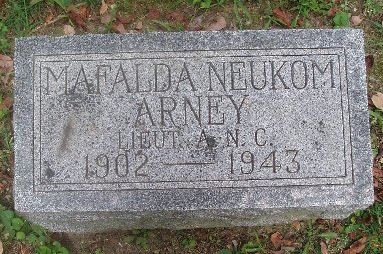During the last weekend in May, many people across the nation come together to remember its fallen servicemembers. Whether through parades, ceremonies, or cemetery visitations, the tradition has been around since the American Civil War.
 Originally called Decoration Day, the American people have been decorating the graves of those who lost their lives in service since 1868. The tradition carries on today — perhaps not so much by families, but by those who are members of veterans service organizations — such as The American Legion Family.
Originally called Decoration Day, the American people have been decorating the graves of those who lost their lives in service since 1868. The tradition carries on today — perhaps not so much by families, but by those who are members of veterans service organizations — such as The American Legion Family.
Try as we might, not all are decorated. Placing flags in every cemetery is a monumental task, requiring dedication from a great number of people. The larger problem, though, is that not every servicemember’s grave is identifiable because there is neither a military marker nor service medallion. Let’s look at a few buried in central Indiana.

Florence Jennings Clark served as the U.S. Army Nurses Corps chief nurse for Lilly Base Hospital #32 during World War I. She was born in Jeffersonville, Ind., on Nov. 15, 1876. After graduating from Shortridge High School, Clark attended the Training School for Nurses in Pennsylvania, graduating in 1901. By 1907, she was director of nurses of the then-Indianapolis City Hospital until the United States entered WWI. Upon returning home, Clark became head of nursing staff at the Indiana Industrial Clinic for 40 years. She served as post commander of The American Legion Berry Copeland Post 128 before it consolidated with 10 other posts to form Memorial Post 3, where she was a dual member. She is buried in Crown Hill Cemetery, Indianapolis.

Mary Kennedy of Greendale, Ind., studied nursing at the Louisville (Ky.) City Hospital. Upon graduation, Kennedy began her nursing career at Grady Hospital in Atlanta, Ga. By 1902, Kennedy went to St. Joseph’s Hospital in Savannah and helped found that city’s first school of nursing. Later, she attended the Southern School of Pharmacy, and then returned to Indiana where her father set her up in a drugstore business in Lawrenceburg. After the Great Flood of 1913, Kennedy moved the pharmacy to Greendale. When the war broke out, she enlisted as an Army nurse and served in Lilly Base Hospital #32. She stayed in Paris for several months after the Armistice doing tuberculosis work and became an early member of The American Legion. In all, Kennedy devoted more than 50 years of her life to nursing. She rests in Greendale Cemetery.

2nd Lt. Mafalda E. Neukom Arney lived her early years in Terre Haute, Ind. Born in 1902, she was a graduate of Garfield High School and the Union Hospital School of Nursing, from which she graduated in 1927. Post-graduate work was done at Lying-In Hospital in Chicago, and Arney began her nursing career in Hines Hospital. After three years, she left to become a nurse at the Veteran’s Hospital in Outland, Ky. After a couple years, she returned to Indiana. In 1934, Arney joined the staff at the Veteran’s Hospital in Indianapolis where she remained until receiving a commission in the Army Nurse Corps. Her active duty with the Army Air Forces began on May 6, 1943. On May 22, Arney and two other nurses boarded an airplane for a routine training mission — training in the care of wounded men who might be evacuated from the front lines in transport planes. The plane crashed a few minutes after takeoff. There were no survivors. Arney is buried in Highland Lawn Cemetery in Terre Haute. She was a member of American Legion Auxiliary Memorial Unit 3.
I don’t purport to know the answer, but somehow the citizens of this country need to come together and decorate the graves of every veteran. Those who have defended this country and our freedoms should be taken care of in death, as in life. We need to teach the younger generations that placing a flag at a veteran’s grave is an honor, and that they need to continue the tradition.
My Auxiliary unit will be decorating a local cemetery again this year. However, they will need more flags due to the discovery of veterans buried there without a military marker or medallion. But the ALA members won’t mind, because decorating the graves is a small price to pay for what those men and women have done for us.
Won’t you join us?
ALA Digital Archive Collection
To learn more about the history of the American Legion Auxiliary, please visit our digital archive collection at https://alaforveterans.pastperfectonline.com.